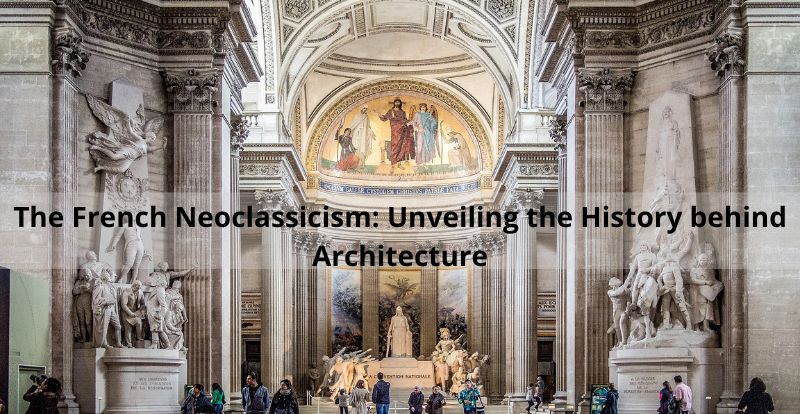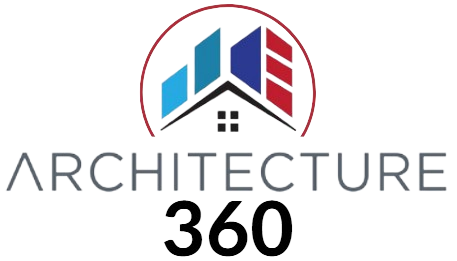The French Neoclassicism: Unveiling the History behind Architecture
The French Neoclassicism: Unveiling the History behind Architecture. Neoclassicism, an artistic movement that emerged in the 18th century Europe, left an indelible mark on French architecture. This movement was characterized by a return to the spirit and style of ancient Greece and Rome, evident in the adoption of symmetrical forms and balanced proportions.
Moreover, in France, Neoclassicism positioned itself as a new architectural language, allowing architects to incorporate aspects of modernity such as the use of more durable materials, the introduction of new techniques, and adaptation to the evolving urban context. In this extensive article, we will delve into the main characteristics of Neoclassicism in France, its development, and the influence it exerted on subsequent architecture.
you may be interested in the following article: The Neoclassical Architecture - A Bridge to ModernityMove to Trash
Video: One of the Most Precious Examples of French Neoclassical Architecture

Revealing Elegance: Exploring French Neoclassicism in Architecture
Advantages
Elegance and Symmetry
French Neoclassical architecture was distinguished by its clean, elegant lines and symmetrical balance in the arrangement of structures. This lent a highly harmonious and aesthetic aspect to the buildings constructed in this style.
Return to Classical Forms
Neoclassicism in France drew inspiration from the principles of Greco-Roman classical architecture, marking a return to the forms and styles of antiquity. This led to the creation of buildings adorned with columns, pediments, and other characteristic features of this classical architectural style.
Technological Innovation
Neoclassicism in France brought significant technological advancements in building construction. For instance, the utilization of new materials such as iron or cement enabled the construction of bolder and taller structures, achieving new standards of innovation in architectural engineering.
Reflection of the State
During the era of Napoleon Bonaparte, Neoclassicism in France acquired a strong sense of monumentality and grandeur, reflecting the significance of the State in society. The buildings erected during this period conveyed a sense of power and authority, showcasing the government's commitment to consolidating France's position in Europe.
Disadvantages
Lack of Originality
One of the primary issues with Neoclassicism in French architecture was the lack of originality. Many constructions exhibited a similar design, relying heavily on classical models. This led to a loss of identity in the buildings, rendering them monotonous and uninteresting.
Absence of Technological Innovation
Another drawback of Neoclassicism in French architecture was the absence of technological innovation. Often, buildings were still constructed using outdated techniques and materials, resulting in structures that were less resilient and durable than those built with modern technologies.
Incompatibility with the French Climate
Neoclassicism in French architecture often proved unsuitable for the French climate, as many constructions were designed to mimic the models of the ancient Greeks and Romans, who had different climatic conditions. This meant that some features, such as columns and ornate façades, were less practical and often resulted in buildings that were more costly and energy-inefficient.
Exploring the Magic of Attics in Architecture
How was architecture characterized during Neoclassicism?
Neoclassical architecture is characterized by its sobriety and simplicity, in contrast to the exuberance of the Baroque and Rococo styles. It seeks balance and beauty through the use of classical elements such as columns, pediments, and vaults. Functionality and proportion are important values, as well as the use of noble and durable materials. This architectural trend, which emerged in the 18th century, represents a return to the values of classical antiquity and a reaffirmation of rationalism and reason against the excess and fantasy of the Baroque.
How is Neoclassicism identified in France?
Neoclassicism in France is characterized by a return to the classical values of ancient Greece and Rome, through a significant artistic movement manifested mainly in architecture and literature. Its main features are simplicity and elegance, with a stylization of forms and a preference for classical themes and motifs. Additionally, French Neoclassicism developed within the context of the Enlightenment, leading to greater attention to reason and science, as well as criticism of religion and tradition.
How is Neoclassical architecture linked to the French Revolution?
Neoclassical architecture and the French Revolution are closely linked, as the aesthetic and artistic ideals of Neoclassicism were adopted by the French revolutionaries to symbolize the heroism, sobriety, and equality of a new social order. The neoclassical architectural language represented a beauty that suited the new revolutionary ideals and was used in the construction of emblematic buildings, such as the Arc de Triomphe and the Louvre, which symbolized the greatness and freedom of France.
The Neoclassicism in France: A Look at its Influence on Architecture
Neoclassicism was an artistic movement that emerged in Europe in the second half of the 18th century. In France, it was an important artistic movement that influenced the field of architecture. This architectural style revalued classical forms, especially those of ancient Greece and Rome.
Instead of excessive ornamentation and baroque ostentation, Neoclassicism opted for simplicity, clarity, and symmetry. In France, Neoclassicism manifested in public buildings and private façades, becoming a lasting influence on French architecture until the 19th century.
The Aesthetic Neoclassicism in 18th Century French Architecture
The aesthetic of Neoclassicism in 18th-century French architecture was characterized by a rejection of the decorative excess of the Rococo and a return to classical simplicity and elegance. Architects drew inspiration from ancient Greece and Rome, using simple geometric forms such as columns, arches, and pediments to create balanced and symmetrical buildings.
Symmetry and order were considered fundamental to architectural beauty and were reflected in the arrangement of the building's windows and doors. This Neoclassical aesthetic also had a significant impact on fashion, art, and culture in general during the 18th century.
The Resurgence of Classical Style: How Neoclassicism Transformed Architecture in France
Neoclassicism was an architectural movement that emerged in France during the 18th century. During this period, classical architecture from the ancient world experienced a resurgence, largely thanks to the discovery of the ruins of Pompeii and Herculaneum, which served as inspiration for the architects of the time. Neoclassicism was characterized by the use of classical elements such as columns, arches, and pediments, as well as the simplicity and elegance of forms.
In the French context, this style had a significant impact on the architecture of the time, transforming the appearance of public buildings such as museums and government offices, as well as private residences.
Neoclassicism in France was an architectural movement born from the desire to restore the greatness of classical Greek and Roman culture. Unlike the Baroque and Rococo styles, Neoclassicism was characterized by simplicity and elegance.
Architects of the time favored clarity of forms, symmetry, and proportion. Neoclassicism had a lasting influence on French architecture, with its footprint visible in numerous public buildings, churches, and palaces. Today, Neoclassicism remains a popular and admired style for its beauty and the mathematical perfection of its architectural designs.
Si quieres conocer otros artículos parecidos a The French Neoclassicism: Unveiling the History behind Architecture puedes visitar la categoría Neoclassical.

Leave a Reply